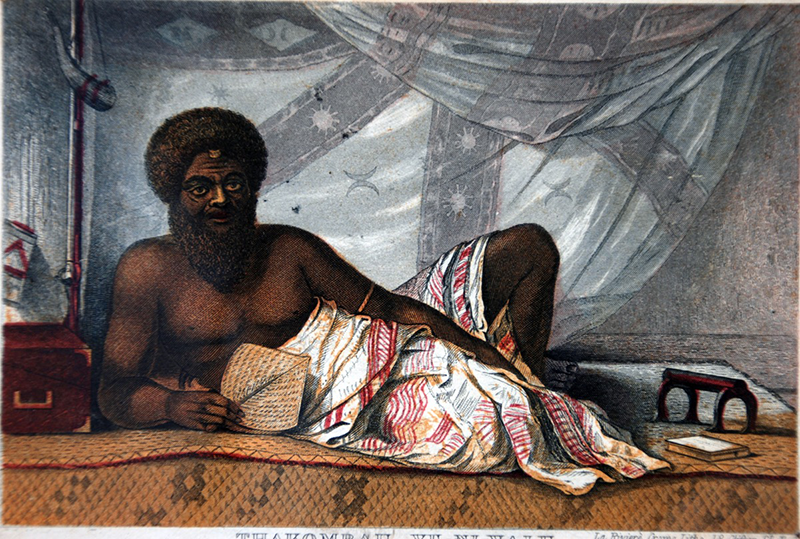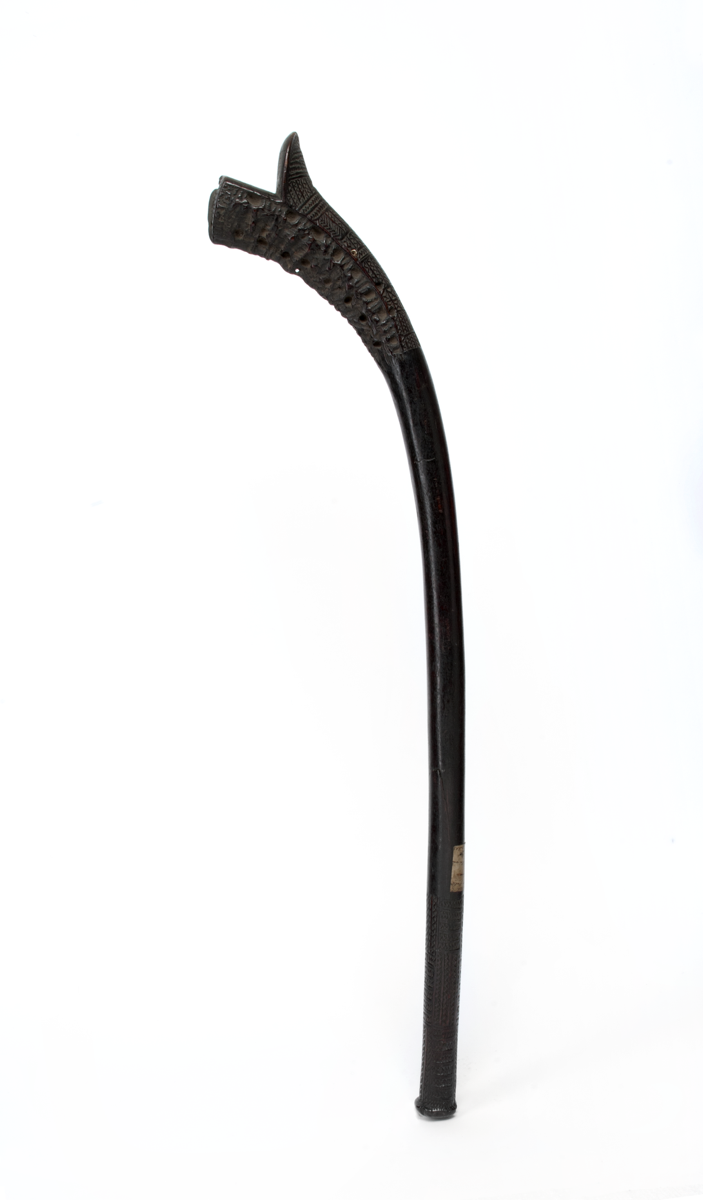By the 19th century powerful chiefly confederacies were established in eastern Fiji. Competition resulted in constantly shifting alliances and frequent skirmishes. The increasing number of European settlers from the late 1850s heightened conflicts between Fijians and white immigrants.
The rivalry between dominant Fijian chiefs culminated in a prolonged war (1843-1855) between Cakobau the Vunivalu (war chief) of Bau and the chiefs of Rewa. The final battle was brought to a decisive conclusion by the arrival of a Tongan fleet of 39 canoes carrying well over 2000 men. The intervention, led by Taufa'ahau ('King George' of Tonga) and the Tongan chief Ma'afu, based in the Lau islands, secured Bau's position within Fiji.
Over the next two decades there were various attempts to promote a centralised government through shaky alliances between chiefs and settlers. In 1871 Cakobau assumed the title Tui Viti (King of Fiji), with the active support of numerous Europeans. The authority of the new government was not acknowledged throughout Fiji. The hill tribes in central Viti Levu continued to assert their independence and the settler community was divided. In 1874 political unease and rising debt resulted in a renewed request for cession to Britain. Wishing to align himself with Queen Victoria, perceived to be the most powerful chief in the word, Cakobau pleaded:
"If matters remain as they are, Fiji will become like a piece of driftwood on the sea, and be picked up by the first passer-by... Of one thing I am assured, that if we do not cede Fiji, the white stalkers on the beach, the cormorants, will open their maws and swallow us."
'Thakombau, Vu-ni-Valu, King of Mbau, Fiji'. From a drawing by J.G. Wilson of HMS Herald (1854-1857). Cakobau is shown reclining on a mat in luxurious surroundings. The book beside his headrest is likely a biblical text. His conversion to Christianity in 1854 encouraged Tongan support and greatly accelerated the number of converts. P100110.VH
Ma'afu surrounded by his Tongan retinue. The powerful Tongan chief Enele Ma'afu'otu'itoga was Cakobau's rival. He consolidated the Tongan presence in Fiji from 1848 and established control over the Lau islands. Photo collected by A. von Hügel, 1875-1880. P.103550.VH
Alliances and Warfare
Prestigious objects, such as ornaments made from whale teeth, were used to encourage alliances between potential allies in shifting relationships between competing chiefly confederacies in the mid-19th century. Weapons recovered from battles highlight the struggle between the Cakobau government and the highlanders of Viti Levu.
Split and carved whale teeth, strung on 3-ply plaited coir cords. The supply of whale ivory greatly increased following the influx of European traders in the early 19th century. Hundreds of these necklaces were produced from the 1820s. During conflicts between powerful chiefly confederacies they were used by chiefs to forge alliances, mark successions and reward leading warriors.
Fiji. Collected by A. Maudslay, 1875-80. Z 2737
War club of dark wood inlaid with white shell beads used in the battle of Korowaiwai in April 1873. This battle was part of the heightened conflict on the northwest coast of Viti Levu between highlanders and settlers, the latter supported by the British Subjects’ Mutual Protection Society and Fijian auxiliaries in the Cakobau government.
Korowaiwai, Ra, Viti Levu, Fiji. Collected by A. von Hügel, 1875-77. Z 39432







